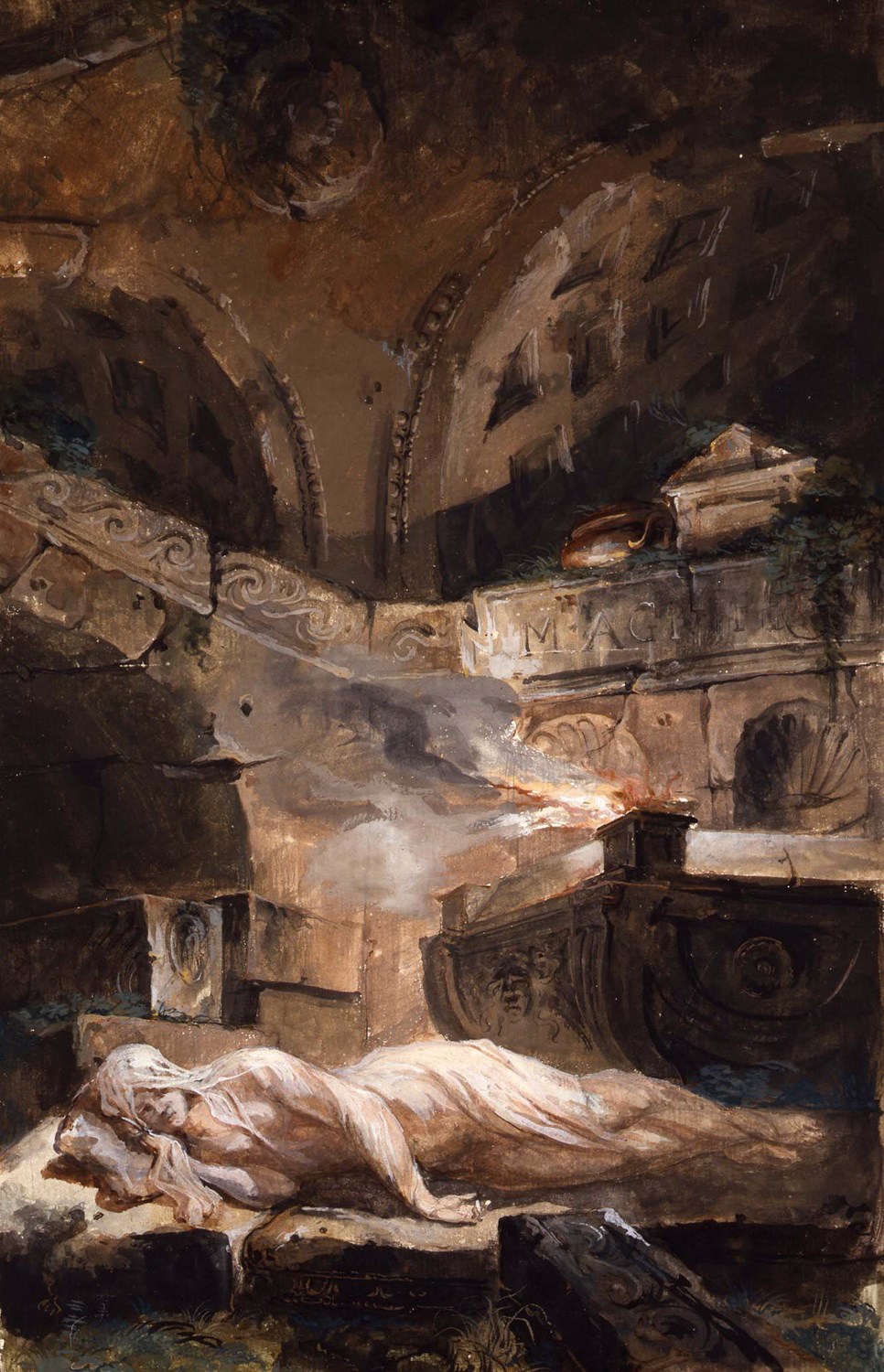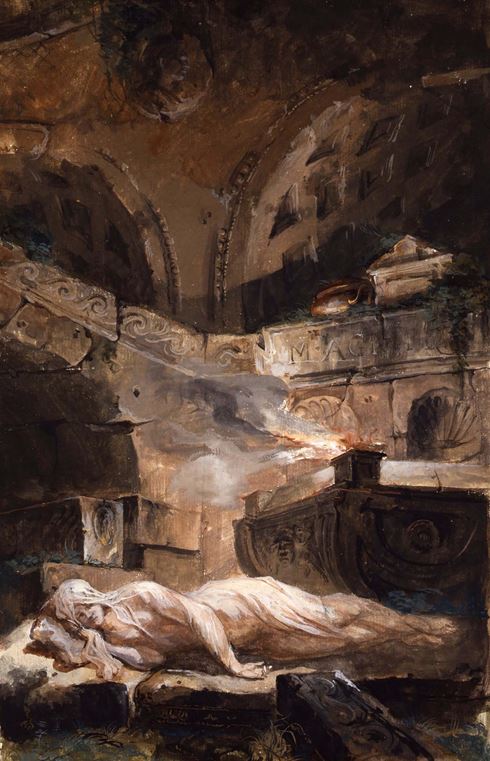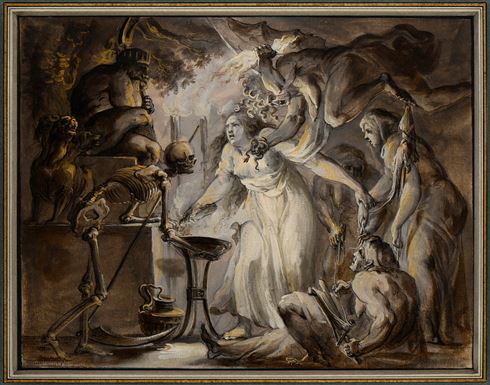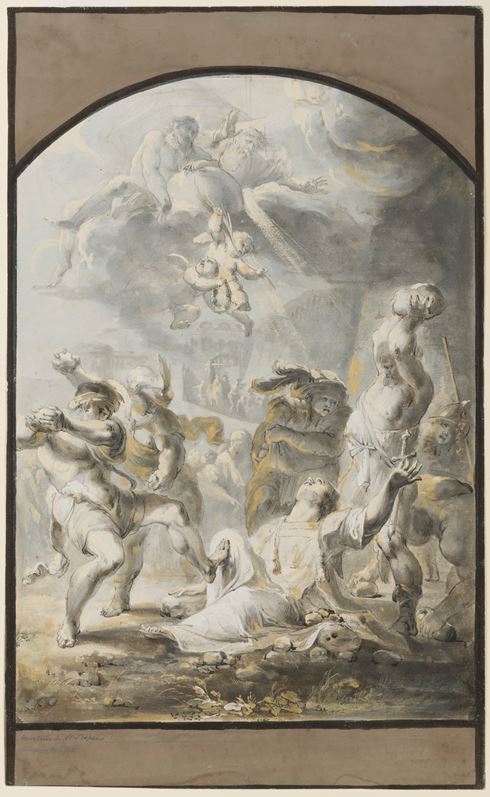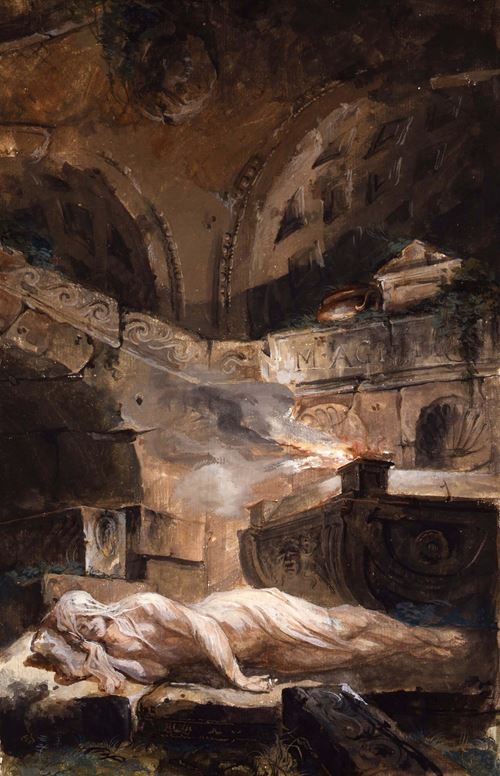
Giovanni DAVID
Cabella Ligure 1743 - Genoa 1790
Biography
Only a handful of paintings, frescoes and drawings survive from the brief career of Giovanni David, a Genoese artist succinctly described by his biographer Federico Alizeri as ‘with few known works, a bizarre style, and an obscure, almost mysterious life’. David studied with Domenico Corvi in Rome in the early 1770s, assisting him in such works as the fresco decoration of the Palazzo Borghese, and winning a first prize at the Accademia di San Luca in 1775. He spent some time in Naples and in Venice before returning to Genoa at the end of the 1770s. There he entered the service of the Genoese count Giacomo Durazzo, who had earlier sponsored David’s artistic training and who was to be his protector and chief patron throughout his career. Indeed, David was the artist-in-residence for the Durazzo family for much of his life. He executed a number of paintings for Genoese churches, including Santa Maria in Carmine, the convent of Santa Maria in Rifugio and Santa Maria delle Vigne, although little remains of one of his last major projects, the decoration of the Genoese church of Sant’Agnese.
Although he worked mainly in Genoa, where he lived in the Palazzo Durazzo, David also spent some time in Venice between 1775 and 1776, when he produced a large number of prints of allegorical, literary and genre subjects, as well as reproductive etchings after the work of earlier artists, including Andrea Mantegna, Jacopo Bellini and Giulio Romano. Many of his prints seem to have been commissioned by Giacomo Durazzo, or were dedicated to him. It was during his brief stay in Venice that David worked as a scene painter at the theatre of La Fenice, probably also at the instigation of Durazzo. Back in Genoa, David received one of his most important secular public commissions, for two lunette paintings for the Sala del Maggior Consiglio of the Palazzo Ducale, completed in 1780. David is known to have travelled to France, the Low Countries and England between September 1785 and October 1786; a trip recorded in a pair of albums containing around 180 topographical drawings which were at one time in the collection of the 19th century Genoese sculptor Santo Varni and are today in the Royal Library at Windsor Castle. One of David’s final projects was the design of a catafalque in honour of Carlo III de’Bourbon, erected in the church of San Lorenzo in 1789, a year before the artist’s death at the relatively young age of forty-one.

